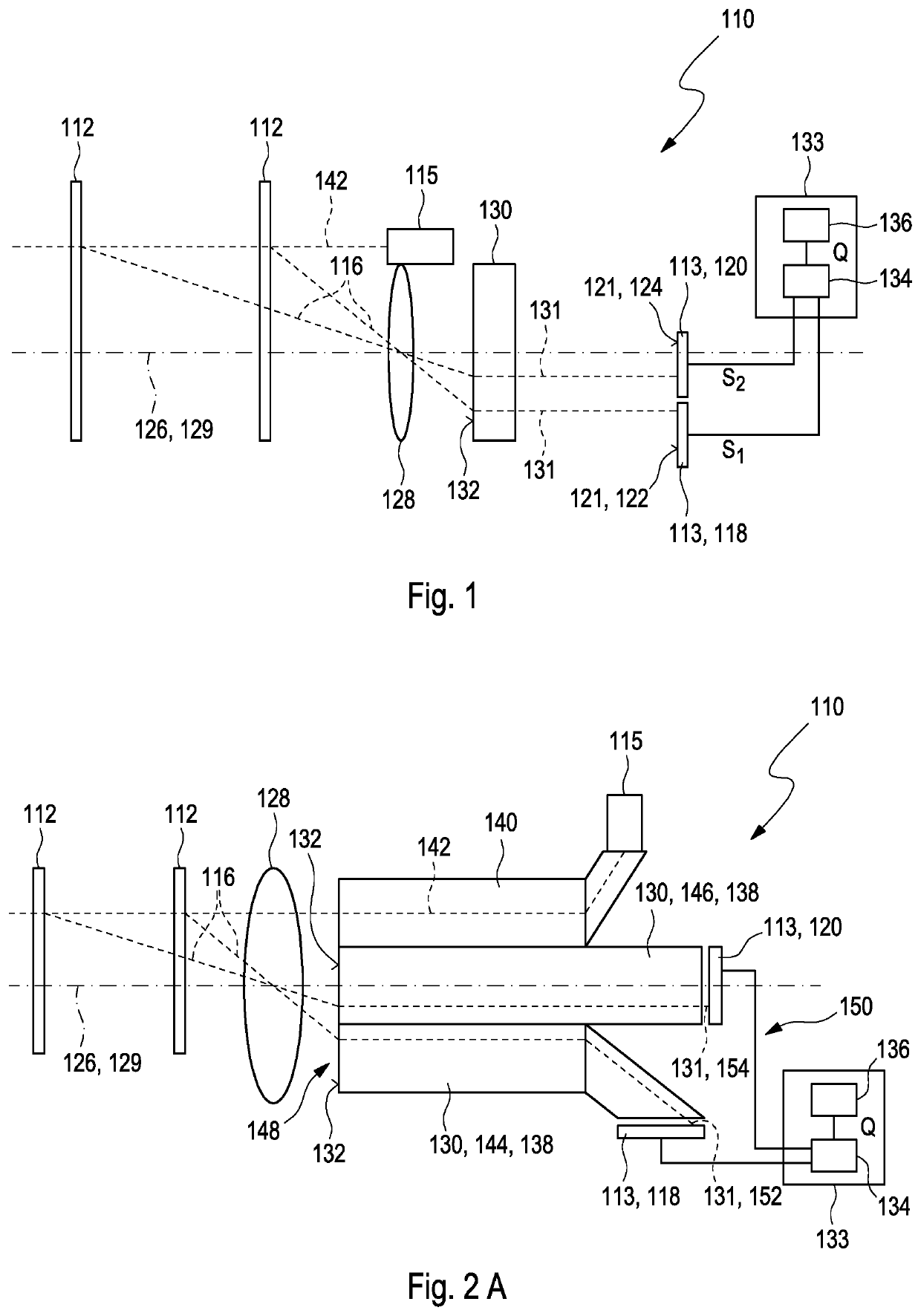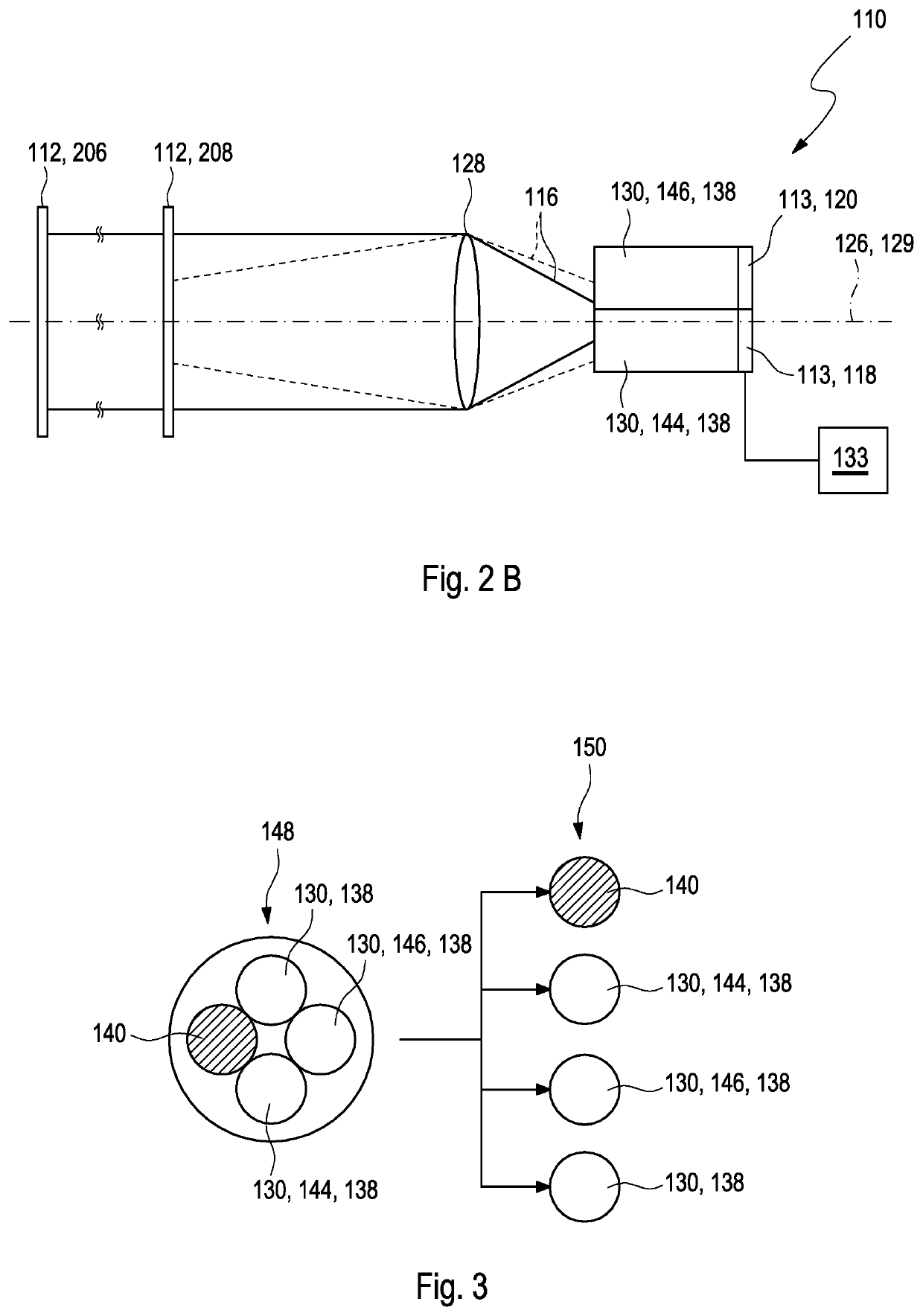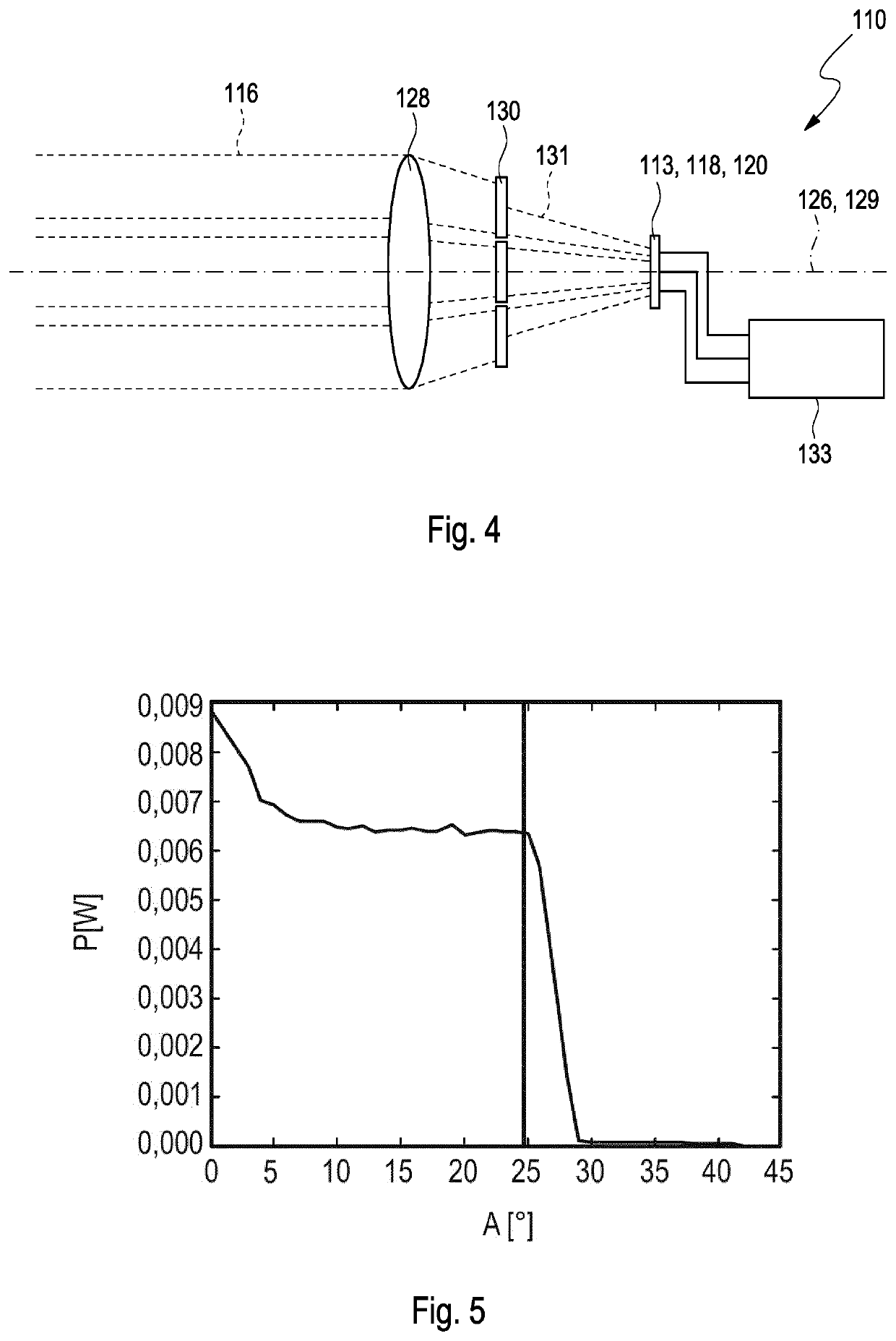Detector for optically detecting at least one object
- Summary
- Abstract
- Description
- Claims
- Application Information
AI Technical Summary
Benefits of technology
Problems solved by technology
Method used
Image
Examples
Embodiment Construction
[0461]In FIG. 1, a schematic view of an exemplary embodiment of a detector 110 for determining a position of at least one object 112 is depicted. In FIG. 1, the object 112 is depicted for two different object distances. The detector 110 comprises at least two optical sensors 113, for example a first optical sensor 118 and a second optical sensor 120, each having at least one light-sensitive area 121. The object 112 may comprise at least one beacon device 114, from which a light beam 116, also denoted as incident light beam, propagates towards the detector 110. Additionally or alternatively, the detector may comprise at least one illumination source 115 for illuminating the object 112. As an example, the illumination source 115 may be configured for generating an illuminating light beam for illuminating the object 112. Specifically, the illumination source 115 may comprise at least one laser and / or laser source. Various types of lasers may be employed, such as semiconductor lasers. A...
PUM
 Login to View More
Login to View More Abstract
Description
Claims
Application Information
 Login to View More
Login to View More - R&D
- Intellectual Property
- Life Sciences
- Materials
- Tech Scout
- Unparalleled Data Quality
- Higher Quality Content
- 60% Fewer Hallucinations
Browse by: Latest US Patents, China's latest patents, Technical Efficacy Thesaurus, Application Domain, Technology Topic, Popular Technical Reports.
© 2025 PatSnap. All rights reserved.Legal|Privacy policy|Modern Slavery Act Transparency Statement|Sitemap|About US| Contact US: help@patsnap.com



